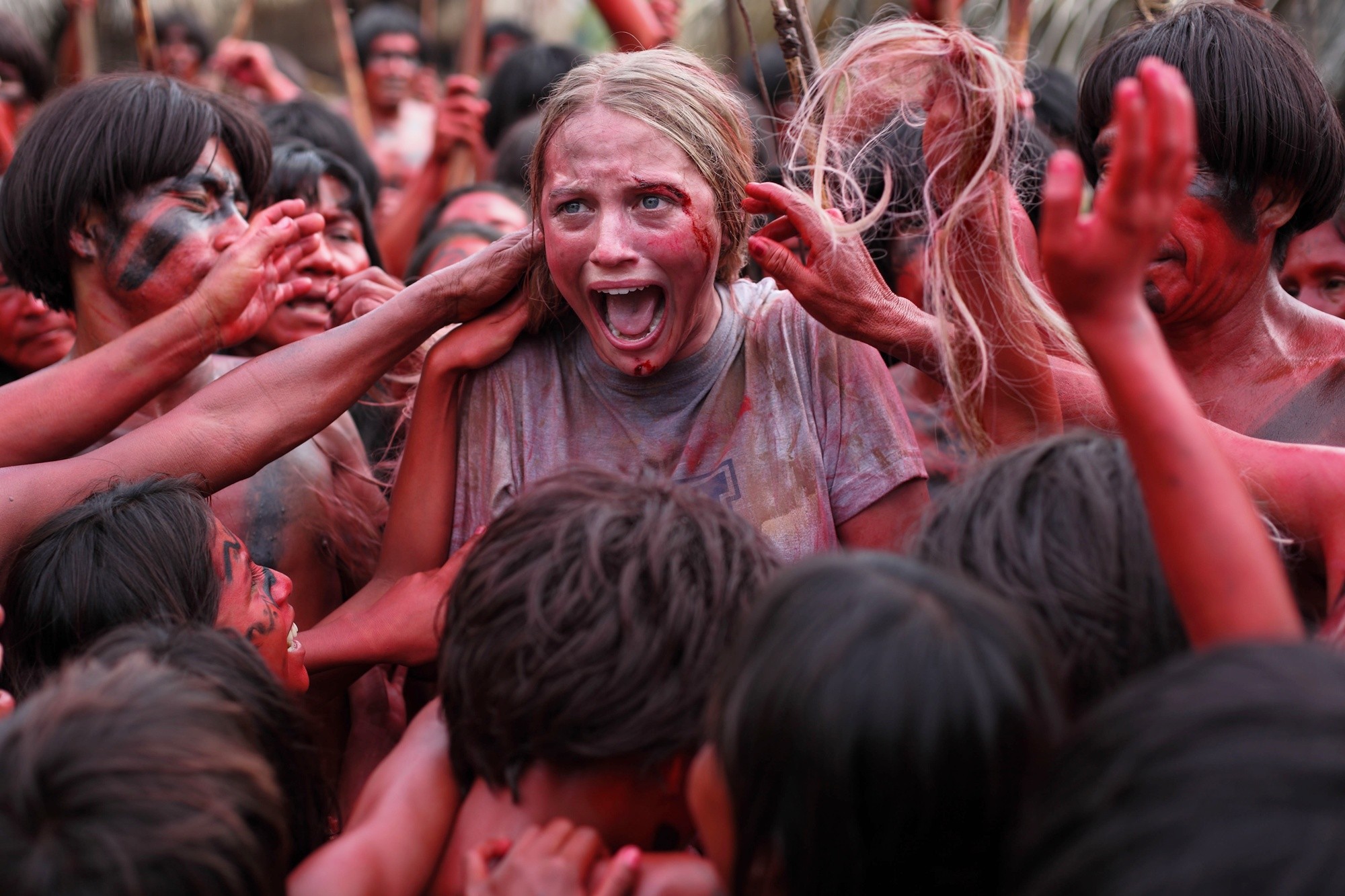THE QUARANTINE HAUNTINGS
 Friday, January 23, 2015 at 12:17PM
Friday, January 23, 2015 at 12:17PM Stars: Lauren Clark, Elizabeth Wiltshire, Darren Moss, Jack Marshall, Jenna Edwards, Bailey Skelton, Peter Sumner and Troy Harrison.
Writers: Bianca Biasi, Rebekah Biasi, Arnold Perez, Josh Sambono and Stephanie Talevski.
Director: Bianca Biasi and Arnold Perez.
Rating: 3/5

Co-directors Bianca Biasi and Arnold Perez deliver a skilfully crafted calling card pic with their psychological thriller/ghost story mash-up, The Quarantine Hauntings. Exhibiting a solid understanding of genre machinations, the pair make up for a lack of narrative inspiration with sufficiently solid scares. Cable TV and digi-download viewership amongst those who appreciate high ambition on a low budget is assured.
A hectic 24-hour handheld shoot at the infamous Quarantine Station on Sydney’s most northern headland is central to both the plot and the pic’s marketing. (Urban legends have proven popular of late with Oz filmmakers; Carlo Ledesma’s The Tunnel [2011] explored the abandoned subterranean network under Sydney, while Dane Millerd took on the legend of the Yowie in There’s Something in The Pillaga [2014]). Although fully restored for the tourist trade, the old hospital site once housed the seriously ill in archaic conditions during the nation’s early colonial period. The high mortality rate led to its reputation as one of the east coast’s most haunted sites, home to several spectres that have allegedly appeared to the unsuspecting for many years.
One such apparition is Jolene (Dalisha Cristina), aka ‘The Girl in The Pink Dress’, a 9 year-old who passed away as medicos bickered over her treatment. Seen in flashback (with veteran character actor Peter Sumner supplying some old-school villainy), Biasi and Perez employ slick post-production trickery to create a nightmarishly immersive vision of poor Jolene’s final moments.
Thematically, the film adheres (at times, tenuously) to such horror genre staples as grief, memory and regret. Key protagonist Jasmine (a particularly fine Lauren Clark) continues to struggle with the death of her father; bff Skye (Elizabeth Wiltshire) offers positivity, guiding her through boyfriend dramas (Daren Moss’ douche-y Cameron) and parental discord. Always nearby is Skye’s younger brother Blake and his offsider Zac (respectively, Bailey Skelton and Jack Marshall) in the smart-mouth comic relief roles that would have been played by Corey’s Haim and Feldman thirty years ago, and little sister Eva (an underused Jenna Edwards).
The reckless recital of an ancient incantation summons Jolene from beyond and the angry spirit seeks out kindred dark soul Jasmine, who has holed up with the group of friends to sleep off antidepressant medication. One moment of true terror, a darkly lit scene during which the extent of Jolene and Jasmine supernatural bond is revealed, is the stuff of nightmares. The unfolding of broader plot points becomes both overly familiar and unnecessarily convoluted, but the performances overall are natural and engaging and few of the clichés will register with the film’s target teenage demographic.
The second and third acts combine lots of references to classics of the genre – a character notes that the diary that contains the spell “looks like the Necronomicon”; Cameron’s late night snacking turns into a homage to a similar scene in Poltergeist; and, Jolene’s muted colour and long black hair unavoidably recall the Yurei spirit seen in J-horror classics Ringu and Ju-On: The Grudge.
Also embraced are the ‘shaky-cam’ techniques and ‘real-world’ lensing (security cameras, mobile phones, etc) that have been refined in standard bearers The Blair Witch Project and Paranormal Activity. Most of the late night panic at the quarantine station is deliberately hard to decipher; the result is more disorienting than terrifying, but achieves enough chills to satisfy.
SCREEN-SPACE was a grateful guest of the production at The Quarantine Hauntings premiere, held at the Quarantine Station site ahead of a limited local theatrical season.



